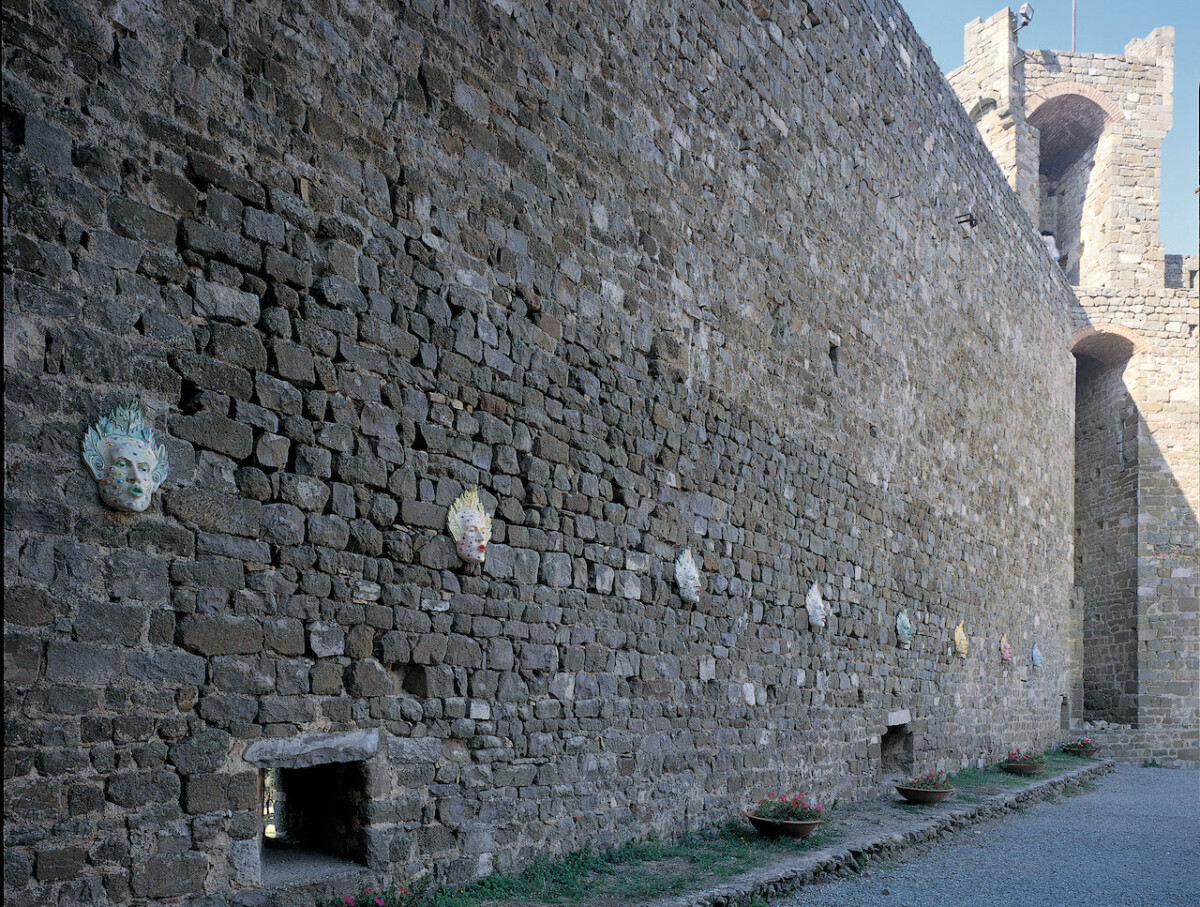"...observing Luigi Ontani looking around from the top of the Fortezza's terraces, amazed and enraptured by the colours and light of the Val d'Orcia or by the gentle might of Monte Amiata, surprising him by admiring the wooden faces of the sacred statues in the Museo Civico e Diocesano and perceiving from his words an irrepressible attraction for these places that already led him to imagine what he would create for Montalcino..."
Carlo Buscalferri, Assessore alla Cultura Comune di Montalcino, taken from the catalogue Arte All'Arte I, 1996
Luigi Ontani ha installato delle opere nella fortezza di Montalcino, legandosi ai temi della poesia, della musica e del Vino, durante la prima edizione di Art to Artcurated by Laura Cherubini.
"And within the walls of the Montalcino art fortress, Ontani places precisely six large terracotta eggs. The very material used indicates the deep connection with the energy of the earth. The eggs may be scattered, as if born here and there by spontaneous germination; on the wall, among the vases, prisoners in the intermediate space of the balcony, camouflaged as a surprise, given that each egg contains a surprise (children's toys in the chocolate eggs, the chick in the Pinocchio one, a character Ontani has long frequented...). But on these closed egg shapes, eyes open up, forming a spiral that goes as far as the pineal eye, smiling and melancholic at the same time. Pineal is the name of 'a cone-shaped, reddish, mushy pineal gland of the brain that lies behind the thalami of the optic nerves: already believed to be the seat of the soul; its function is little known (slowing down bodily development)' (from the Zingarelli dictionary). [...]
In addition to the six eggs and the canope, there will be a row (as in a vineyard) of eight masks in Montalcino that will mix water and wine. As always, Ontani draws inspiration from the place itself, and wine is perhaps the most typical product of Montalcino. The masks may adorn the entrance courtyard with the high walls or accompany the walkway. There are two cycles of these masks, both relating to the seasons: the watercolour cycle bears the initials: Prim, Aut...; the second, richer chromatically, modifies the names according to metonymic contaminations: Primav/eros, Esta/si, Inver/o."
Laura Cherubini, Arte all'Arte I, 1996

